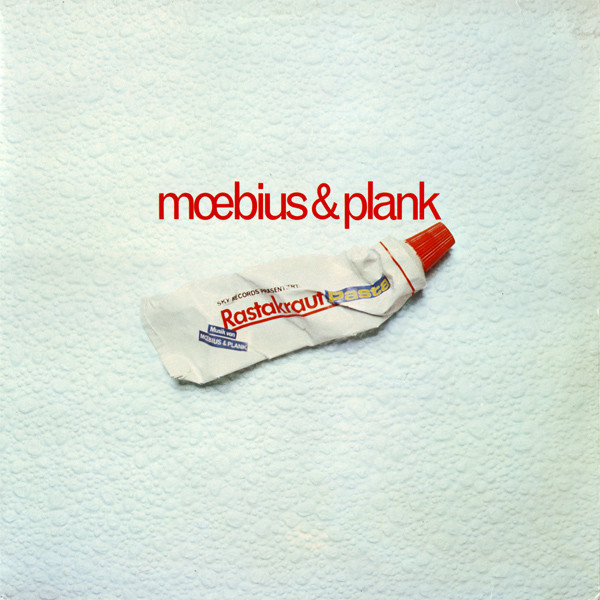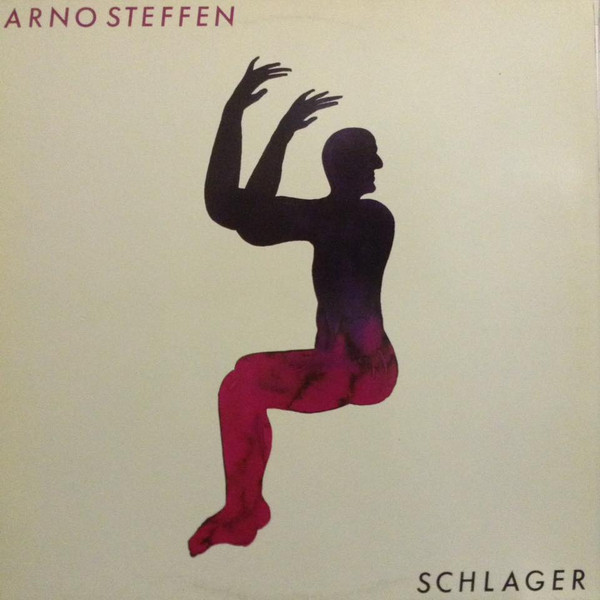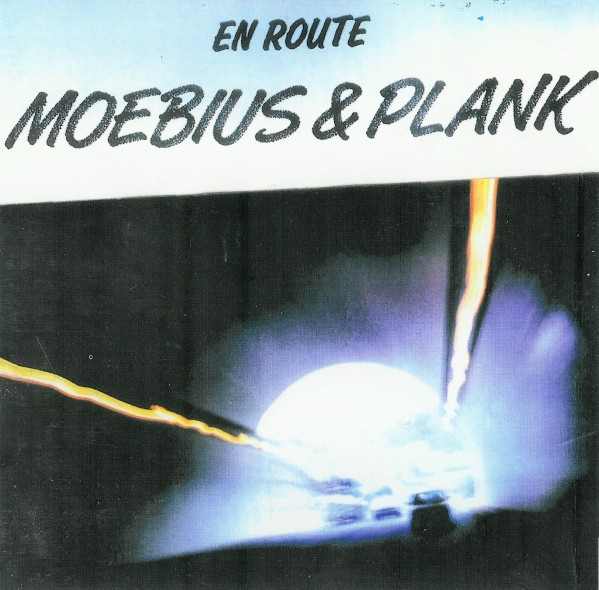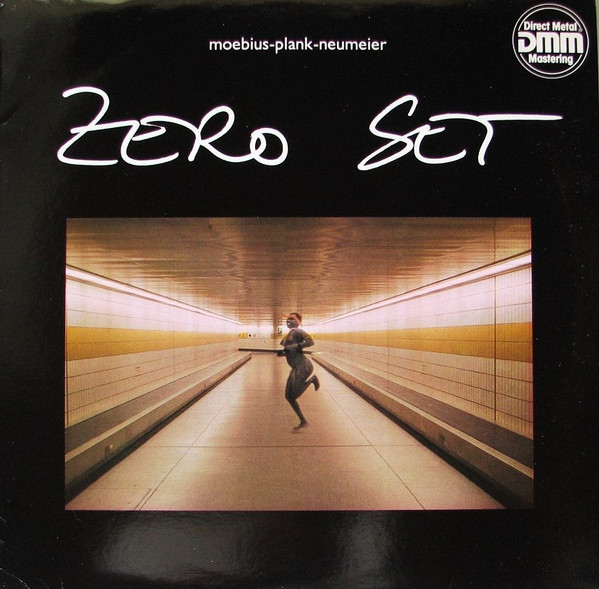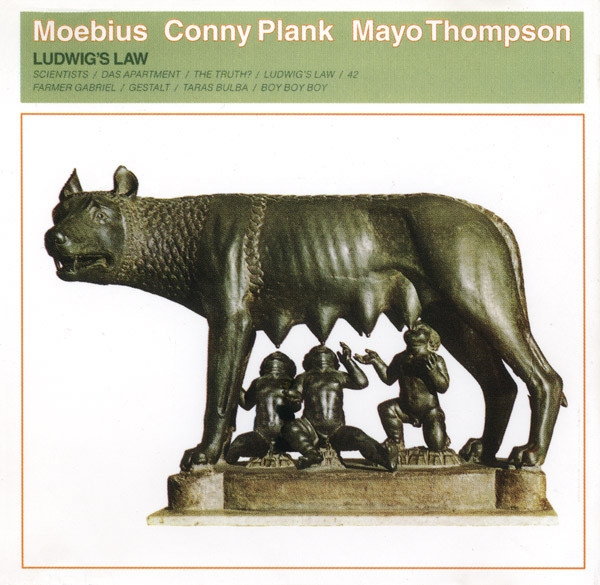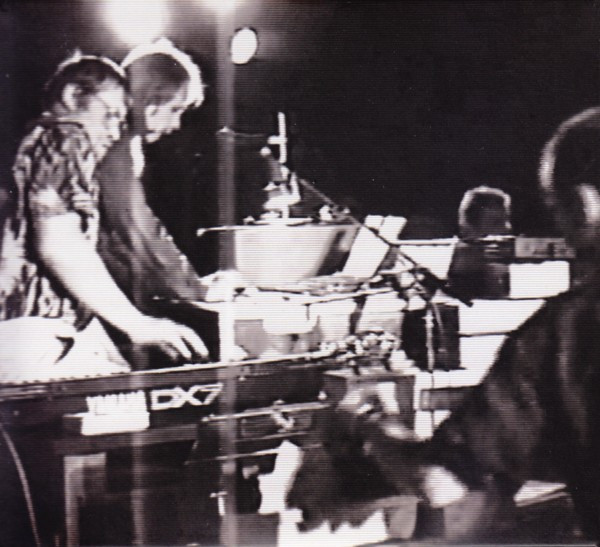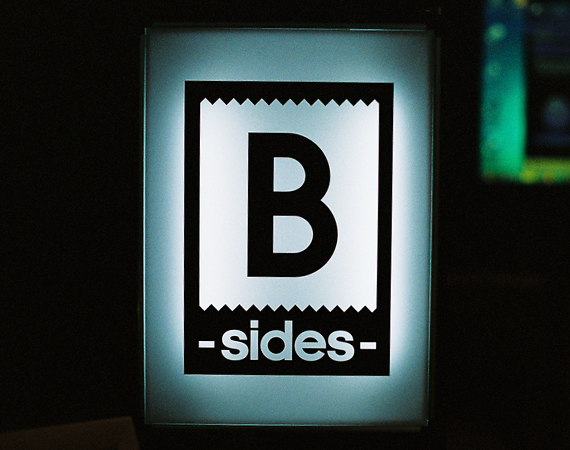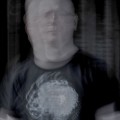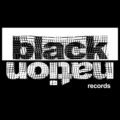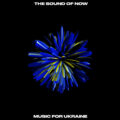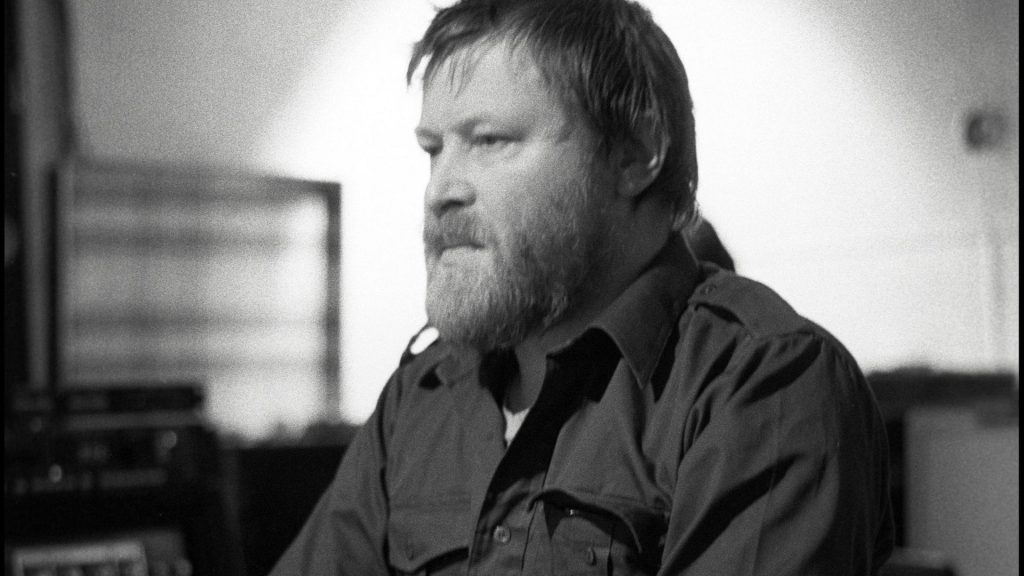
Tom Govan selects and dissects the essence of Krautrock originator Konrad “Conny” Plank
It’s 1987 and in the bustling pachinko machine arcades of central Tokyo walks a tall leather clad man brandishing field recording apparatus. His bear-like stature and distinctive clothing mark him out from the small and uniformly besuited company men all huddled on the glowing arcade machines. He appears blissfully content as if his microphone and headset are tuned in to a gently sung aria rather than a dizzying cacophony of mechanised commotion. The figure is Konrad “Conny” Plank and the footage I refer to is included in the biopic “The Potential of Noise” and the raw footage was taken from home video of Plank filmed whilst he was in Tokyo working with the Eurythmics just a few months before his death. In a moment of real poignancy Plank turns to the camera to reveal his rationale for field recording the chaos of inner city Tokyo, “Any noise has the potential to be music if it’s liked by a human being.”
When faced with a monumental subject a writer’s mind can, understandably, be gripped by inertia and become overrun with indecisiveness. At least that’s been my experience of trying to profile Krautrock monolith – Conny Plank. The breadth of his career and the scale of his legacy have made him a figure that has inspired a bout of flaccid indecision within writerly core. This, in part, explains why there has been a five-year hiatus between the moment Innate head honcho asked me to write a piece on Plank, and the moment of my actual delivery of said article. The question that rumbled around in my dome and stymied any progress was…. when you have a musical figure whose impact hit like a tidal wave on a beach, how is one supposed to channel such widescreen effect into neat streams of narrative?
Nevertheless, within five years a lot of writers could have written the man’s biography. To date I don’t think anybody has done this but his son Stephan made the above-mentioned film that does a wonderful job of portraying his father Conny as an iconoclast producer and an absent Dad. I have not produced a biography, instead a mere 4000 words. My reasons for such a meagre time to output ratio, a need for precision.
When it comes to written depictions of widely influential cultural figures precision and focus are two much needed anchors to place in the conceptual ground. In Plank, you have a figure whose legacy has proved so focal to the advancement of music that when facing the task of quantifying and describing that importance. A writer could travel down and get lost in a complex tangle of side lines and sub-stories, and I’m not the writer to navigate you through that maze. But I do have something to say inspired by focusing on Plank as an artist in his own right, an area that I have found is under-documented.
“Plank, christened by David Stubbs as the Krautrock midwife, in his role as producer delivered musical babies for artists from an almost unfeasibly disparate range of backgrounds”
Plank, christened by David Stubbs as the Krautrock midwife, in his role as producer delivered musical babies for artists from an almost unfeasibly disparate range of backgrounds – producing everyone from emergent New York hip hop act Whodini through to Italian pop songstress Gianna Nannini with acts like Devo, Killing Joke and DAF enjoying longstanding creative partnerships with Plank throughout his life. Socrates famously used the metaphor of the philosopher as midwife of the soul to elucidate on his approach to philosophy wherein he questioned and quizzed others about their basic assumptions in order to reveal new understandings of the world. Plank’s midwifery role was very much similar to this in that he asked sonic questions of a musician’s basic musical assumptions in order to lay bare the art pregnant within their soul; his was a quest to inspire rebirth and regeneration of artists regardless of their provenance.
Whilst many notable producers have been lionised for their ability to transform the sound of an artist by imprinting their own sonic identity in to a record, Plank was a different breed of producer entirely. Plank was remarkable in his ability to make his studio an environment where artists could work to commune with their own understanding of how they wanted to sound without the spectral influence of the “producer” and his/her/their ego looming over the recording process. His raison d’etre as a producer was to act as a medium between the artist and the tape – a process he rather modestly (under)described as simply knowing to press record at the right time. Plank coaxed, encouraged, suggested, dared, challenged and expanded the minds of the artists he worked with to allow them to embrace a new and often bold revision of their musical identity and how that should manifest itself. For an album to bare the words produced by Conny Plank marked it out as a document of an artist being able to create without restraint.
Such a production ideology has led to an admirable discography but one that remains elusive to those wishing to pull out a distinctive Plank “sound”. Where Spector, Hannett and Perry have left an indelible and repeatable image in all of their recordings, what is left in Plank’s recordings are qualities that are harder to assimilate in to a signature style. Rather than being his sound it was rather the sound of an artist allowed to fulfil their true sonic potential in an unhurried way and then enhanced by Plank’s tailored but daring studio alchemy. The Cosmic Egg sum up his studio genius very well: “Conny was not just your normal engineer, he would become actively involved in the music he was recording. Weird bits, offbeat mixing ideas, extra musicians, arrangement, composition, Conny could do it all himself, and thus often change a recording entirely!”
However, with no signature style or repeated themes there becomes a need for a narrowing of focus when it comes to looking at Plank’s sonic legacy. Fortunately, themes do come to the fore more readily in Plank’s small but seminal back catalogue of artist recordings. Despite spending the bulk of his career, tragically cut short by laryngeal cancer in 1987 at the age of 46, in the producer or engineers chair at his home studio in Wolperath. Plank did dedicate some time to work as a musician in an array of collaborative projects with artists, almost exclusively those that he had produced.
“Techno is everything that you haven’t imagined yet” Jeff Mills
“The music is just like Detroit, a complete mistake. It’s like George Clinton and Kraftwerk are stuck in an elevator with only a sequencer to keep them company.” Derrick May
Within this limited body of work, we find take centre stage and the strains of a potent form of Proto-Techno music are threaded through the records. Previously unimaginable electronic music made possible by the mind, and sequencers, of the man who produced Kraftwerk’s first records. An early adopter of samplers, mostly those released by E-mu, Plank’s work as an artist came in the form of playful sonic corruptions aided and abetted by technology and concocted with likeminded sonic deviants. I think based on the evidence I’m about to present Messrs Mills and May would have to concur that Plank is a techno godfather. It may be George Clinton and Kraftwerk who are in the techno elevator but in my mind Conny decided what floor they were going to, and then withdrew to the lift shaft with a tape recorder to capture the potential of noise, the Proto-Techno midwife overseeing the union of black/white and American/European musical orbits.
Plank’s love of experimenting with technology
News taken from Rastakraut Pasta by Moebius & Plank
Dieter Moebius first encountered Conny Plank in 1971 when Kluster’s (pre-Cluster) first album was recorded and engineered by Plank in a disused church. Ten years later a friendship had formed that resulted in a musical collaboration – the first to bare Plank’s name as artist rather than producer. The cover art of the record, a squeezed tube, gives hints at the devious logic of the music inside, but the inscrutable pop art overtones of the imagery and Dadaist album title are suitably opaque to keep the listener guessing until the disc is on the platter. The lingua franca of this album is, to paraphrase Asmus Tietchens excellent sleeve notes from the 2010 reissue of the album, a strange form of pop music.
Clearly the two friends and collaborators approached their tabula rasa as an opportunity to explore virgin territories. And this album headed for the vastly under explored interstice between dub and rock music. Admittedly reggae and rock had formed a healthy bond since the early 70s with the likes of Bob Marley, Peter Tosh et al being signed to major labels and being slowly transformed in to album artists making reggae in the image of rock music; their sound represented a hybridised form of reggae that was palatable to mainstream white rock audiences. But this was always reggae being received on rock audience terms – think lusher instrumentation and pleasing melodic virtuosity not the raw drum and bass hypnotism of Jamaican Dub Reggae.
What therefore remained unimagined was what would happen if, to borrow a term from David Toop, the implements of dub reggae came to subvert the rudiments of rock music? The implements of dub that Toop specified are almost all production strategies designed to play with the time and spatial structure of pre-recorded sound: echo, reverb, drop out, punch in, reverse etc. Dub producers would also simplify a song’s structure, reducing it in to a series of repeated phrases that could then be abstracted like paint across a canvas.
Plank and Moebius took on the artistic project to paint a rock canvas with this abstracted pallet of dub colours with great gusto. Plank’s ability to stretch and transform sound and Moebius’s skilled playing coalesced perfectly to create an album of deeply engrossing experimental rock hybrids that used the idea of repetition so prevalent within dub music to create locked grooves of narcotised funk overlaid with an agitated mixture of ambient noise, guitar feedback and found sound. Clipped phrases of synth are repeated into infinity, muffled vocals appear for phantom-like cameos, snippets of shortwave radio burst momentarily across the stereo field, licks of Moebius’s guitar appear in the mix before submerging slowly in to the mire, vast channels of noise and endless feedback suddenly engulf the listener and then dissolve to a granular level. This is the true spirit of dub abstraction writ large on to the rock studio.
The album, like much of the output of Moebius & Plank, is timeless in that it provides the listener with tracks that could have been made yesterday. Opening track News for example could just as easily be a piece of music made by Tolouse Low Trax, a slow and deliberate cubist stacking of staccato bass, compressed drums and vaporous clouds of guitar and found sound that barely changes over its 5-minute duration. Rock music slowed to a crawl, ketamised and suspended in a haze of subversion and corroded by the errant faders of Plank’s customised mixing desk.
Existing in a parallel universe away from the punk and post-punk movements that drank heavily from the cup of dub during the late 70s and early 80s the music of Rastrakraut Pasta proves to be a unique experiment by two musicians taking a concept, and probably a hefty bag of grass, in to a studio and pressing play.
Somewhere taken from Schlager by Arno Steffen (1983)
What could be more techno than making a record entirely on samplers? Schlager is exactly that record and one of the first to avowedly confess it’s non-instrumental source material. Whilst there have been other far more notable records composed entirely of samples, Endtroducing…., Since I Left You etc, these would take well over a decade to appear and as a further point of difference are records made from other records – hip-hop love letters to the craft of digging and flipping vinyl records. Schlager instead is more of a giddy experiment with the potential of a sampler as an instrument in and of itself- a project focused on subverting samples of unknown origin to create crazed instrumentals teetering on the interstice between electro-funk and industrial music, but suffused with a giddy childlike quality that sets it apart from lots of other music of its ilk.
Whilst the Fairlight CMI can claim to be the first commercially available sampler, the E-mu Emulator was perhaps the most popular of the early samplers thanks to its user-friendly interface and price-tag, significantly less than that of the Fairlight. With limited sampling time and low fidelity, the Emulator was best deployed to create short punches of sound and its inbuilt keyboard allowed users to map and replay a sample across 4 octaves. Plank was an early adopter of the samplers and made heavy use of them in his work with other artists as well as within his limited solo and collaborative projects.
For the most part, this is an album that features Plank and Steffen using the Emulator to make music that attacks you and damn near assaults your ears with furnace blasts of found sounds blunted and shunted in to your ear canal. Mercifully at the mid-point you are given a curious but welcome reprieve in the form of the delicate and poised “Somewhere”. Steffen’s sun-baked vocal, treated with mild distortion, is bathed in an ethereal haze of heavily reverbed ambient drones, thick clouds of white noise punctuated by seagulls mewing and squawking. The effect is like coming across a curious sonic mirage amidst a fiery desert wasteland.
As a piece of early dark ambient and experimental industrial music this album fits alongside early Throbbing Gristle as well as selected pieces from Tangerine Dream and Popol Vuh’s back catalogue. With the sampler at its centre and no other instruments this is Plank again making the studio a place where a curious alchemy could take place to create a piece of sound art that live musicians could never dream of issuing- the power of technology harnessed to divergent ends.
Echaos taken from En Route by Moebius & Plank (1995)
This could be chronologically classed as the fourth album that Plank and Moebius produced together as part of their ongoing album a year deal with Sky Records, but whilst it was intended for release on the label it was never came out on Sky and it was only issued posthumously, first in 1995, after Planks death and was indeed incomplete at the time of Plank’s passing.
The incomplete tracks were finished and remixed by engineer Emmanuel ‘Manu’ Guiot for the initial 1995 releases of the album and it’s hard to define what stage of incompleteness Guiot received the tracks in. Nonetheless what is clear is that by the time Plank and Moebius came to these sessions machine rhythms were very much in the foreground, gone is any nod to rock music. This is the sound of digital sequencers and drum computers jostling with each other to spit out rugged rhythmic templates over which Plank and Moebius attach all sorts of synthetic depth charge and sampled aberration. The bulk of the tracks do show some signs of age and are very much products of the excesses and digital fascinations of the 80s; the machine gun e-e–e-e-dits and overblown sonic details are slightly tiresome on repeat listens but there are a few tracks very much worth repeat listens.
Following a full-bodied start with three strong rhythmic tracks Echaos appears as a strange but welcome detour similar to the midpoint mirage in the Schlager album. It’s a peculiar but absolutely intoxicating track that feels like being pulled backwards through a scene in a film noir scene whilst on a strong cocktail of dissassociative drugs. Hazy reversed synth tones and little tickles of trumpet merge in with all sorts of panned studio trickery issued from Plank’s desk to make for a heady brew that reminds me of the work of Chel White and Savant, amongst others.
Pitch Control taken from Zero Set by Moebius, Plank & Neumeier (1983)
Though not a dance record per se, Zero Set is one of the earliest extensions of Krautrock’s possibilities on the dance floor, pitting the robust electronic sequencer patterns of Plank and Moebius against the restless percussive dexterity of Guru Guru drummer Mani Neumeier. On tracks such as the prophetically titled ‘Speed Display’ and ‘Pitch Control’, the phasing, chattering and decidedly Germanic grooves found on Zero Set constitute vibrant proto-techno at its earliest and finest.
Indeed, Pitch Control appears to have portended the techno blueprint so perfectly that the track has been picked up and used in several commercial available mix CDs by techno DJs including Ken Ishii. On his 2005 mix cd Mix-Up Vol.3 Ishii flanks Pitch Control with minimal techno grooves from Carl Craig’s BFC project on one side and Danny Zelnky’s Low Res alias on the other side.
Clocking in at 117bpm the track is built upon feisty patterns of interlocking sequencer churn anchored in with a powerfully slapped drum pattern from Neumeier. The groove is irresistible but also mildly terrorizing, akin to taking a ride on a mountain lion jacked up on potent European-strength speed.
It’s worth taking in the captivating cover art of this record that digitally superimposes a ghostly image of an African tribal female into the cold urban environ of an inner-city subway station. A meeting between tribal imagery and the products of modernity is something we’ll keep in mind for later.
Farmer Gabriel taken from Ludwig’s Law by Moebius, Plank & Thompson (1998)
Moebius and Plank teamed up for a fourth time in 1983 and recorded a set of brittle funk and new wave curios that were then adorned by semi-sung monologues from Red Krayola’s Mayo Thompson. Thompson had met Moebius at a festival in England (where Mayo was living and working with Art & Language) and the two made a date to collaborate in Conny’s Studio. Reminiscing in the Wire Thompson says that…
“Moebius and Conny had been making a record a year for Sky Records and they decided they wanted something a little different….I went down to Conny’s studio and spent a crazy week with him, making it up as we went along”.
The resulting record, Ludwig’s Law, was rejected by Sky and then sat on the shelf until after Plank’s passing and was finally issued by Drag City in 1998, with licensing issues preventing any subsequent versions being released since.
Subversion runs through the album. The cover art, a manipulated photograph of Romulus and Remus and a new third subject suckling from the teats of the Capitoline she-wolf, sets the tone for the overall album aesthetic that matches the deviant post-modern wordplay of Thompson’s vocal contributions to the experimentally inclined electronic funk of Moebius and Plank.
Farmer Gabriel is perhaps the best encapsulation of this meeting in which Thompson’s fantastically offbeat tale of a feckless chicken farmer who has an unfortunate incident resulting in his chickens being set in concrete, is matched with a burly synth line and drum groove complete with the obligatory 80s gated snares. To truly set the scene Plank and Moebius add in a cacophony of rhythmically programmed farm noise to match Thompson’s absurdist agricultural ruminations, pig grunts and chicken clucks cycle endlessly to create a strident head melting brew characteristic of the fulsome approach taken by Moebius and Plank.
As an aside, the track was remixed by tech-house wunderkind Edward in 2013 who stripped away the vocal and took the track on an 11-minute drum machine workout through the outskirts of a desert, with 808 cowbells and loon birds circling in and out of an ethereal and hazy house skit.
Black Sample taken from Who’s That Man – A Tribute To Conny Plank: Disc 4 Live in Mexico 1986 by Moebius, Plank & Steffen
The final track to be reviewed is tinged with a special poignancy as it is the only live recording of Plank and was recorded only a few months before his death. Between September and October 1986, Conny Plank travelled through all Hispano-American countries on behalf of the Goethe-Institut and took this opportunity on to appear on stage as a musician and “sound director”; he played a DX7 and trumpet, operated a mixer and used an 8-track tape machine with pre-recorded background music.
After rehearsals in his studio, he went with the formation of his good friends and collaborators Dieter Moebius and Arno Steffen to join him on stage alongside his favoured sound engineer at the time, Detlef Wiederhöft providing on the road support for a six-week tour of South America. The exact reasons for the patronage of the Goethe-Institut are not documented but one can imagine cultural enrichment was amongst the lofty aims. Regardless of motive Plank and his collaborators took on the project with gusto. Sadly it was his only appearance as a musician on a stage, something which Moebius speaking to the More Dark Than Shark blog comments on with fondness….
“We were invited by the Goethe-lnstitut, a German cultural organisation, who paid for it all. The word travelled fast, and the shows got bigger and bigger as we went. We played in some countries where rock’n’roll was not allowed – in Chile, for example, where Pinochet was terrorising his people. For some, it was like, finally – we can go to a rock show. lt was Conny’s last and only tour: for him, this was unique.”
As a document of the tour the live recordings were released in 2014 as part of a hefty 4-CD box set retrospective put together by Gronland. Clocking in at just under 80 minutes the entire set is a crazed, energetic and at times anarchic soup of wild synthesis, machine rhythms and devious human interjections. It’s hard to pick a favourite but in the interests of self-reference, I’m picking out Black Sample. Just as the cover art of Zero Set portends an overlaying of tribal and modern cultures this track makes that connection even more explicit.
Ostensibly Black Sample takes the rhythmic framework of Pitch Control and remixes it. Mani Neumeier’s live drums are replaced with a drum machine, an 808 from the sounds of it, and the robust synth lines of Pitch Control are teased in out of the mix. Over this is laid a scintillating lather of sampled African chants and bursts of guitar noise. One has to remind oneself that this is 3 musicians on stage delivering a high-octane electronic music show in the pre-laptop era; this set the blueprint for live techno.
Read more of Tom’s writings at www.abetterbreak.net

